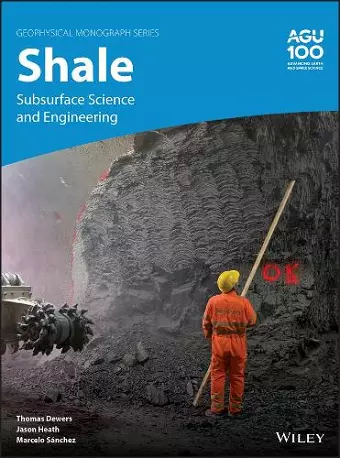Shale
Subsurface Science and Engineering
Jason Heath author Marcelo Sánchez author Thomas Dewers author
Format:Hardback
Publisher:John Wiley & Sons Inc
Published:29th Oct '19
Currently unavailable, and unfortunately no date known when it will be back

Advances in theories, methods and applications for shale resource use
Shale is the dominant rock in the sedimentary record. It is also the subject of increased interest because of the growing contribution of shale oil and gas to energy supplies, as well as the potential use of shale formations for carbon dioxide sequestration and nuclear waste storage.
Shale: Subsurface Science and Engineering brings together geoscience and engineering to present the latest models, methods and applications for understanding and exploiting shale formations.
Volume highlights include:
- Review of current knowledge on shale geology
- Latest shale engineering methods such as horizontal drilling
- Reservoir management practices for optimized oil and gas field development
- Examples of economically and environmentally viable methods of hydrocarbon extraction from shale
- Discussion of issues relating to hydraulic fracking, carbon sequestration, and nuclear waste storage
Book Review: I. D. Sasowsky, University of Akron, Ohio, September 2020 issue of CHOICE, CHOICE connect, A publication of the Association of College and Research Libraries, A division of the American Library Association, Connecticut, USA
Shale has a long history of use as construction fill and a ceramic precursor. In recent years, its potential as a petroleum reservoir has generated renewed interest and intense scientific investigation. Such work has been significantly aided by the development of instrumentation capable of examining and imaging these very fine-grained materials. This timely multliauthor volume brings together 15 studies covering many facets of the related science. The book is presented in two sections: an overview and a second section emphasizing unconventional oil and gas. Topics covered include shale chemistry, metals content, rock mechanics, borehole stability, modeling, and fluid flow, to name only a few. The introductory chapter (24 pages) is useful and extensively referenced. The lead chapter to the second half of the book, "Characterization of Unconventional Resource Shales," provides a notably detailed analysis supporting a comprehensive production workflow. The book is richly illustrated in full color, featuring high-quality images, graphs, and charts. The extensive index provides depth of access to the volume. This work will be of special interest to a diverse group of investigators moving forward with understanding this fascinating group of rocks.
Summing Up: Recommended. Upper-division undergraduates through faculty and professionISBN: 9781119066682
Dimensions: 279mm x 218mm x 20mm
Weight: 1111g
320 pages